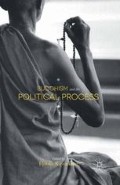Abstract
The recent discourse of Buddhism and violence is clearly provocative. Part of this is due to Buddhism’s global image, which has been aligned with the concept of peace. However, in contrast to this image, Buddhism, like other religious traditions, has a robust history of adherents who commit suicide and engage in conflicts and wars. Buddhist monasteries have served as military outposts, monks have led revolts, and Buddhist principles have served as war rhetoric for heads of state. Some of these acts of violence draw upon Buddhist scriptures; some others invoke Buddhist symbols.1 While violence manifests in different forms, the most visible determinant of the violence is Buddhists’ relationship with the state. As Ian Harris notes in his ‘sixfold typology,’ Buddhist-inspired violence can come from the state or in reaction to the state. One political mechanism that enables Buddhist-justified violence on either side of the spectrum is the ‘exception to the rule.’
Access this chapter
Tax calculation will be finalised at checkout
Purchases are for personal use only
Preview
Unable to display preview. Download preview PDF.
Notes
See Jerryson, M. (2013) ‘Buddhist Traditions and Violence,’ in M. Juergens-meyer, M. Kitts, and M. Jerryson (eds.) The Oxford Handbook of Religion and Violence (New York: Oxford University Press).
Agamben, G. (2005) State of Exception (Chicago: UniversityofChicago Press), p. 2.
Horner, I. B. (1992) The Book of the Discipline, Vol. I (Oxford: Pali Text Society), p. 139.
Horner, I. B. (1963–1964) Milinda’s Questions, pp. 14–17.
For instance, see Bartholomeusz, T. (2002) In Defense of Dharma (London and New York: RoutledgeCurzon).
Palatino, M. (2013) ‘The PoliticsofNumerology: Burma’s 969 vs. 786 and Malaysia’s 505,’ The Diplomat, 13 May 2013, http://thediplomat.com/2013/05/the-politics-of-numerology-burmas–969-vs–786-and-malaysias–505/
Burchett, C. (2003) Sayings of Buddha (Varanasi and Kathmandhu: Pilgrims), p. 24.
Horner, I. B. (1983) The Book of the Discipline, Vol. III, p. 1.
Gethin, R. (2004) ‘Can Killing a Living Being Ever Be an Act of Compassion?’ Journal of Buddhist Ethics 11, 171–72.
Horner, I. B. (1988) The Book of the Discipline, Vol. V, p. 271.
Geiger, W. (1993) The Mahāvaṃsa or the Great Chronicle of Ceylon (New Delhi and Madras: Asian Educational Services), p. 178.
Fuller, T. (2013) ‘Extremism Rises among Myanmar Buddhists,’ New York Times, 20 June 2013.
Bodhi, B. (2000) The Connected Discourses of the Buddha (Boston: Wisdom Publications), pp. 1334–35.
Kent, D. (2010) ‘Onward Buddhist Soldiers,’ in M. Jerryson and M. Juergensmeyer (eds.) Buddhist Warfare (New York: Oxford University Press), p. 172.
Jenkins, S. (2010) ‘Making Merit through Warfare and Torture according to the Ārya-Bodhisattva-gocara-upāyaviṣaya-vikurvaṇa-nirdeśa Sūtra,’ in Buddhist Warfare, p. 63.
Gokhale, B. (1968) ‘Dhamma as a Political Concept,’ Journal of Indian History 44, 251.
Abeysekara, A. (2002) Colors of the Robe (Columbia: University of South Carolina Press), pp. 230–31.
Streckfuss, D. (2011) Truth on Trial in Thailand (Abingdon and New York: Routledge), p. 6.
Demiéville, P. (2010) ‘Buddhism and War,’ in Buddhist Warfare, p. 56.
Watters, T. (1904) On Yuan Chwang’s Travels in India, 629–645 A.D. (London: London Asiatic Society), p. 254.
Biggs, M. (2005) ‘Dying without Killing,’ in D. Gambetta (ed.) Making Sense of Suicide Missions (New York: Oxford University Press), p. 178.
Tatz, M. trans., (1994) ‘Murder with Skill in Means,’ in The Skill in Means (New Delhi: Motilal Banarsidass), p. 74.
Yu, X. (2010) ‘Buddhists in China during the Korean War (1951–1953),’ in Buddhist Warfare, p. 145.
Liu, Ming-Wood (1984) ‘The Problem of the Icchantika in the Mahāyāna Mahāparinirvāna Sūtra,’ Journal of the International Association of Buddhist Studies 7, 68.
Chang, G. (1983) ‘How to Kill with the Sword of Wisdom,’ in A Treasury of Mahāyāna Sūtras (University Park: Pennsylvania State University Press), p. 65.
See Victoria, B. D. (2006) Zen at War (Lanham: Rowman and Littlefield).
Schmithausen, L. (1999) ‘Buddhist Attitudes toward War,’ in J. E. M. Houben and K. R. Van Kooij (eds.) Violence Denied (Leiden and Boston: Brill), pp. 57–58
Wallace, V. (2010) ‘Legalized Violence,’ in Buddhist Warfare, p. 93.
Broido, M. (1988) ‘Killing, Lying, Stealing and Adultery,’ in D. S. Lopez Jr. (ed.) BuddhistHermeneutics (Honolulu: University of Hawai’i Press), p. 100.
Dalton, J. (2011) Taming the Demons (New Haven: Yale University Press), p. 90.
Davidson, R. (2005) Tibetan Renaissance (New York: Columbia University Press), p. 35.
Gray, D. (2007) ‘Compassionate Violence?’ Journal of Buddhist Ethics 14, 252.
Ekvall, R. (1964) Religious Observances in Tibet (Chicago: University of Chicago Press), p. 75.
Mayer, R. (1996) A Scripture of the Ancient Tantra Collection, The Phur-pa bcu-gnyis (Stirling: Kiscadale Publications), p. 108.
Meinert, C. (2006) ‘Between the Profane and the Sacred?’ in M. Zimmermann (ed.) Buddhism and Violence (Lumbini: Lumbini International Research Institute), pp. 100–1.
Māher, D. (2010) ‘Sacralized Warfare,’ in Buddhist Warfare, p. 85.
see Jerryson, M. (2011) Buddhist Tury (New York: Oxford University Press).
Keown, D. (2012) ‘Buddhist Ethics,’ in D. L. McMahan (ed.) Buddhism in the Modern World (New York: Routledge), p. 224.
Editor information
Editors and Affiliations
Copyright information
© 2016 Michael Jerryson
About this chapter
Cite this chapter
Jerryson, M. (2016). The Buddhist State of Exception. In: Kawanami, H. (eds) Buddhism and the Political Process. Palgrave Macmillan, London. https://doi.org/10.1007/978-1-137-57400-8_8
Download citation
DOI: https://doi.org/10.1007/978-1-137-57400-8_8
Publisher Name: Palgrave Macmillan, London
Print ISBN: 978-1-349-84747-1
Online ISBN: 978-1-137-57400-8
eBook Packages: Political Science and International StudiesPolitical Science and International Studies (R0)

